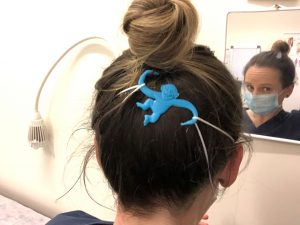Things you can do to reduce your risk of getting COVID-19
- Physical distance
- Maximise hygiene
- Avoid crowded areas
- Working from home where possible
- Take the stairs instead of the lift
- Use home delivery or click and collect options for groceries
- Wear a face mask
Wearing a Face mask with Asthma
There are different rules on face mask use for different Australian states and territories. If you are in an area of high levels of COVID-19, you may be asked to wear a face mask when leaving your home, especially when you cannot stay 1.5 metres away from other people.
Asthma Australia encourages all people facing community spread to wear face masks. This includes people with asthma. Face masks, can significantly lower the risk of catching COVID-19 and spreading it among their community.
We understand from some people with asthma that this may be difficult. Face mask use is an important tool to be used to slow the spread of COVID-19 infection, so we encourage you to find a mask that you can wear comfortably, especially in higher risk places like healthcare settings and crowded indoor spaces like shopping centres.
Types of face masks include:
N95 or P2 mask
- Used by healthcare workers
- Must be correctly fitted
- More difficult to put on and take off safely
Surgical mask
- Flat or pleated, usually blue or white in colour
- Attached to the head by straps that go around the ears
- Single use
Fabric mask
- Lots of different designs available
- Three-layer fabric is recommended
- Choose fabrics like cotton that are easy to breathe through
You need to put face masks on so they are both comfortable and effective. Click here for a video demonstration.
Helpful hints for using a mask:
- Wash or sanitise your hands before putting on a mask

- Make sure the mask completely covers your mouth and nose.
- If you are using a surgical mask, press the wire nose piece around your nose. Making a seal here helps stop your glasses fogging up!
- Surgical masks should be pulled down to cover from your nose to your chin.
- If your mask has ear loops, you can use a plastic clip or tie to join the ends together at the back of your head. This helps the mask fit better and stops it hurting your ears if this is an issue for you.
- Make sure that your mask does not have any holes or valves. This type of mask does not prevent you spreading the virus
To get used to face mask wearing, you can practice wearing these around your home before going out in public with one. You can start wearing your mask for as little as a couple of minutes and work your way up each time.
Start by wearing your mask for activities that do not require much effort, such as watching television or reading a book. See if you can gradually build up your tolerance!
We understand that some people with asthma are concerned about feeling breathless when wearing a mask. Face masks are made of material you can breathe through, and if worn properly should not impact your breathing. If you feel short of breath wearing a mask, try moving to an area with good airflow, such as outdoors, and removing your mask until this feeling has stopped. If it continues, we advise you check in with your doctor. Simple breathing techniques might help you tolerate your face mask: Click here
Try not to touch your face after handling your mask. If using a fabric mask, we encourage you to wash your mask daily. Single use masks should be thrown away after each wear.
You should always wash your hands before putting on a mask, and after removing it.





 1800 278 462
1800 278 462


